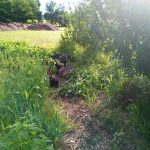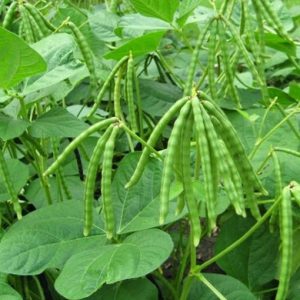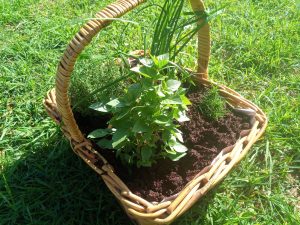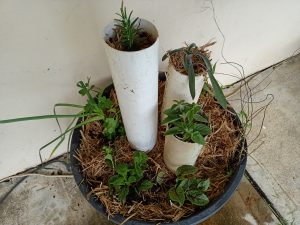Sydney is finally expecting some solid rain for an extended period of time. Now is a great time to direct sow seeds and let Mother Nature water your garden for you. This is particularly important for those of you who have a large area to cover and will broadcast sow (ie just toss a heap of seeds around and let them fall where they will). Larger areas are difficult to irrigate so time your sowing to just before some good rainfall and walk away! You can also get a head start on this if you soak your seeds overnight before the rains are due. It kicks off the germination process a day earlier than if you wait for the rain the do the soaking for you.
After a long, hot and dry few months I have patches of ground that need to be covered with plants. I will be throwing around seeds to use as a green manure crop. Green manure crops are grown for the purpose of being cut back later and left there to improve the soil. In the meantime they provide valuable shade and cover to the area.
The two main components of a green manure crop are – the compost-lovers out there will appreciate this – legumes (for the high nitrogen content) and grasses (for the carbon content). Legumes, as most of you will know, fix nitrogen from the air and make it available to other plants. They do this by establishing a symbiotic relationship with bacteria in the soil, the bacteria are what convert the gaseous nitrogen from the atmosphere into a form which is able to be taken up by the leguminous plant. This nitrogen is then put into the soil when the legume is cut back or dies. So we are literally creating nitrogen from thin air. Grasses are what are known as “C4” photosynthesizers (also known as C4 Carbon Fixation). Have you ever noticed that on a very hot day many of your plants will be drooping – but the grass never seems to droop? That is because they are able to continue to photosynthesize during extreme heat when other plants have shut down. So the grasses are continuing to take carbon from the atmosphere and putting this into growth which is then put into the soil when the plant is cut back or dies. And this time we are creating carbon from thin air.
We certainly are a country of droughts and flooding rains…
Now run outside and create your oasis!
Jo









